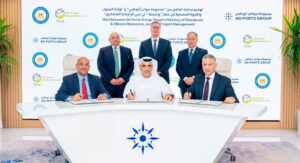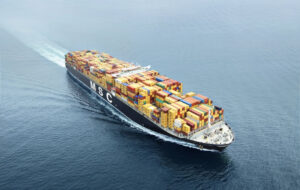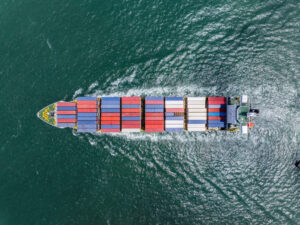Qingdao New Qianwan Container Terminal (QQCTN) in China has become Asia’s first fully automated port terminal after servicing its first containership, the 13,386 TEU COSCO France, on May 11, 2017.
After three years of development, the terminal has completed its first fully automated phase to upgrade two berths across 660 metres of quay with seven STS cranes operated by remote control, 38 automated stacking cranes (ASCs) and 38 battery-powered automated guided vehicles (AGVs).
The automation project consists of three phases.
Phase one covers two berths with 1.5 million TEU, while additional phases plan to automate a total of six berths and support 5.2 million TEUs in the future.
The terminal is controlled by laser scanners and positioning systems that can locate the four corners of each container to accurately clamp and move them onto driverless trucks.
This technology allows the terminal to operate in complete darkness during the night, which has helped reduce the terminal's labour costs by 70% and increase efficiency by 30%.
An example of where this has taken effect is the amount of workers required to unload a cargo ship as this has been reduced from 60 to nine.
Automated guided vehicles are programmed with routes and tasks and also have the artificial intelligence to recognise when a recharge is needed.
The terminal is part of China’s One Belt One Road initiative and as a result QQCTN is planning to operate sustainably around the clock with four more fully automated berths.
Watch: Why China is Building a New Silk Road
A series of interviews by New China TV have explored the launch (below).
The manager of the terminal's automated quay cranes, who is translated from Chinese to English, explains that the intellectual property of the port has been independently designed.
Focusing on the different lengths of the quay crane girders, he said: “We have chosen this design through a lot of simulation and emulation to create efficiencies.
“We have cut the length of the backreach from the typical 28 metres to twelve metres in order to … optimise the structure of the quay crane and lower the cost.
“Most importantly, it has lowered the tire pressure across the whole terminal to make efficiencies.”
A worker from one of the port's less automated terminals, also translated, evaluated the new development.
Highlighting the advantages, he said: “It cuts the numbers of the staff and lowers the dependence on quay crane drivers.
“Another very important advantage is that the automated terminal guarantees the safety of our drivers … in an automated terminal the workers are in the central control room.”
Watch the video below:








